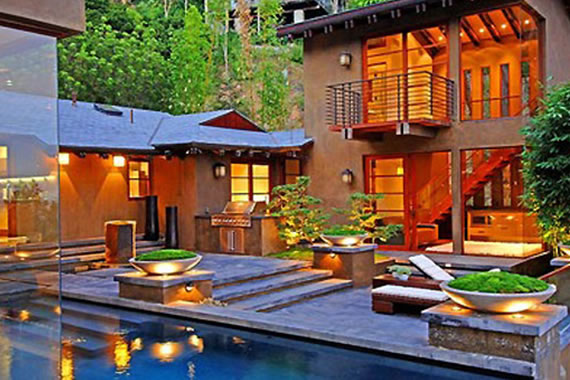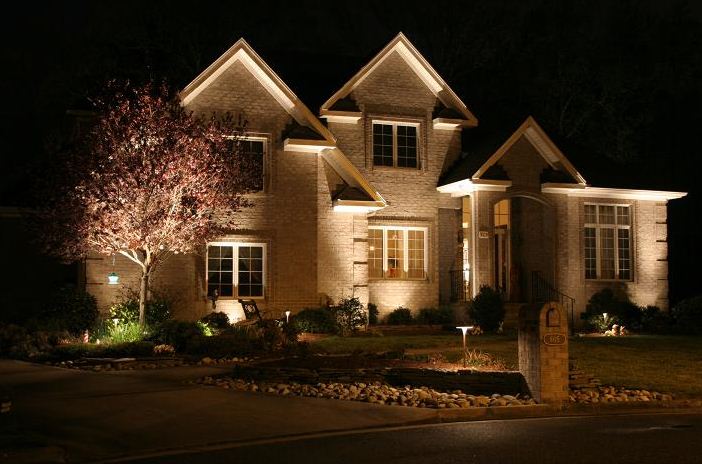How to control these new lights is always an interesting topic of discussion, switches or motion sensors, photocells or time-clocks. We recommend installing light fixtures that have built-in controls already in them when possible, with individual switches from your house wiring to override them. This way you have more control over the lighting functions to accommodate your needs on different occasions. Most light fixtures with built-in controls, include a function where you can keep the light on and override the motion sensor if need be. You simply toggle the house-wired switch, off and back on once the sun goes down, to make the fixture stay on all night long, or until the switch is turned off. This way if you are spending time in the backyard, the light wont cycle on and off every time it detects motion, it will simply stay on.
More expensive alternatives to lighting up your yard include, light poles, bollard lights, pathway lights, accent lights and up lights. Wiring these lights is more of a commercial installation rather than a residential installation, seeing how the wiring should be ran in conduit. Often, light poles and bollards have to be set in concrete to support them securely. They also sell direct burial cable for line voltage electrical wiring underground, but it is required to be installed deeper into the earth and the cost savings don’t seem to to worth the added labor in digging the trenches. The best way to run the power is in conduit and underground, this will also allow you to pull in additional or replacement wiring in the future.
Low voltage lighting is great for curb appeal or accenting exterior features. However, if you plan on any outdoor cooking or bar-b-queing, you definitely will need some line-voltage (120 volt) lighting. When it comes to lumens, which is a measurement of light, line voltage lighting puts out a lot more lumens than any low voltage lights put out. Combining line voltage lighting with low voltage lighting is always a great upgrade to any property. This brings us to another inexpensive type of low voltage lighting system, solar lighting. Solar lights don’t need any wiring what-so-ever, any home owner can install these themselves, you simply just stab them into the dirt. Solar lighting puts out even less lumens than low voltage lighting, so keep your expectations low if you go with solar and you wont be disappointed.



